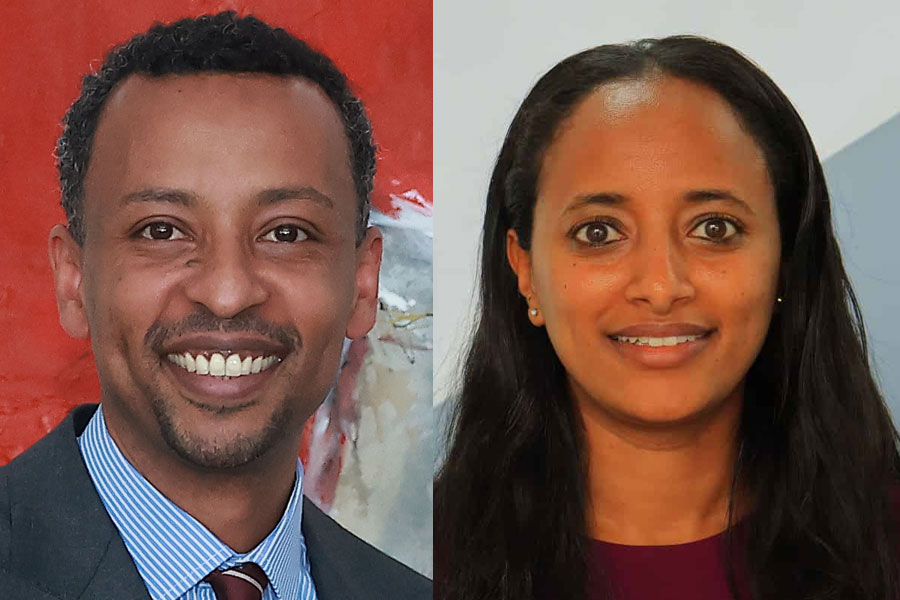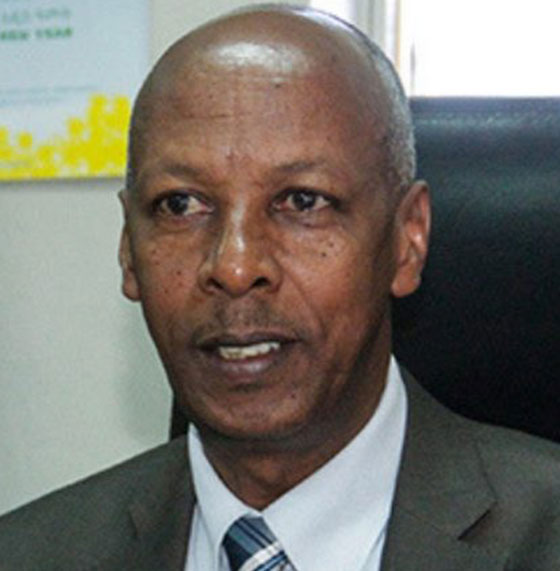
Commentaries | Sep 10,2022
Jul 27 , 2019
By Solomon Debebe
Despite a strong commitment and massive investment by the government, a lot of projects fail to accomplish their stated goal, and the revolving youth fund should avoid this trap by applying comprehensive policy instruments, argues Solomon Debebe (solethn@gmail.com), who works as a technical training and wage employment advisor for an international NGO.
Though the definition of youth varies from culture to culture, it seems that we can agree on the fact that the age is a period of transition from dependence to independence. It is a period marked by critical choices that affect the future of the individual and society. As is evident in some countries, the successful transition of the dependent child to an independent adult contributes to societal prosperity in terms of economic and other positive indicators.
The smooth transition of the youth from childhood to adulthood is possible if we have a clear policy at the national level and the cultural commitment at community and family levels. The kind of support from the state and family to the concerned youth should be precise and encouraging for the youth to thrive.
Community and national level policy on youth development should be more of a priority to developing nations as the number of youths in these countries is substantial. Nearly one billion of the 1.2 billion youth between the ages of 15 and 24 reside in developing countries, and their numbers are growing far more rapidly than in higher-income countries according to the International Fund for Agricultural Development. In particular, the report mentioned that the growth of this population group is concentrated in the world’s poorest developing countries, especially those in Africa.
Ethiopia fits in this category of countries with a demographic youth bulge. These vast number of young people require jobs, services and several other needs to survive and thrive. The Ethiopian youth development policy seems to reflect this contemporary reality. However, the political implications are given high priority than the skills and behaviours of the youth in shaping their individual life and the role they could play in the economy of the nation.
The Ethiopian government seems a bit concerned about the rising share of unemployed youth in the country, especially since 2016. Compelled by disturbances and riots fueled by hopelessness and unemployment challenges, the government seems to work on this issue systematically. We have got a commission working in the area of employment and innovation. That is good news. We have heard from both the former and current prime minsters that the federal government and regional governments are allocating billions of Birr for youth employment programmes. However, after these announcements are made in the media, there is hardly any follow up of the performances of these funds. It is hard to come by figures that show how many youths got jobs or are self-employed because of these huge funds. Forget about finding out the detailed disaggregated data describing the impacts of these huge investments in the lives of the youth; we even hear nothing regarding how much of the budget get utilised.
An even more pertinent issue is the question of whether we have the relevant expertise to handles this huge investment in youth employment schemes.
Despite the commitment of the federal and regional governments, it is quite disturbing to learn that many of the projects in our country struggle to succeed. Many youth-focused projects seem to fail even at the design stage. The theoretical and practical information that the project design is based on is outdated and does not fit with current realities. Everyone seems to be implementing old project proposals that may have worked in the past. It looks like new learning does not happen in the area, and many new projects struggle from the start and fail too soon.
There are a lot of reasons for this. There is a lot to learn from the experiences of many local and international NGOs. Those with relevant experience in the area say that youth programs are costly. These projects, especially the training component, requires inputs such as machines, tools, workshops, land and a lot of other expensive materials. A project for just a few hundred youths may require millions. As a result, many projects are undercapitalised. This frustrates government officers, project staff, and the youth themselves, and they start to declare that particular project is a failure.
The second major issue that makes projects that focus on the youth a significant challenge is the variety of livelihood pathways the youth prefer to engage in. Some want to go for vocational skills courses, others to several other technical pieces of training and livelihood options. This makes the project not only expensive but requires a multitude of experts supporting a project.
Therefore, the youth unemployment crisis in Ethiopia has to be tackled from various comprehensive perspectives that include sociocultural and investment policy. A detailed strategy guided by revised policies that centres productivity, innovation, invention and commitment in the lives of the youth is needed to solve the already worrisome challenges of youth unemployment and dissatisfaction.
As the saying goes, “A goal without a plan is just a wish.” The goal of reaching out to the youth with only financing without clear phase-based training and mentoring is a baseless commotion. There have been recent announcements in the media about billions of Birr being allocated to youth programs. It is essential to point out that these projects are going to be challenging and that it is important to design systems that guarantee that the funds are managed well in a transparent manner.
Though this is one of the ways we could encourage self-employment, separate management should be designed and specific strategies should be in place to mentor the young people. Lending hundreds of thousands of Birr to them without arranging coaches and mentors would be killing the spirit of the youth. If this project fails, they will be turned off from entrepreneurship. Before awarding these funds to those applicants, it is necessary to see if the youth really understand what the project is trying to accomplish for themselves and their community.
The creation of a decent work environment in the employment sector can also play a significant role in solving this huge challenge. Making sure that the minimum wage and other packages work seamlessly in the employment sector is essential.
Incentives should support the participation of the private sector in employment and youth development. For instance, recognising and awarding those private organisations that offer youth employment, coaching and mentorship are critical. The concerned government institution should design tax exemptions, land and other detailed award systems to give the private sector essential roles.
Rural and urban youth policies should also be differentiated and spelled out clearly. The fact that the rural environment is endowed with opportunities for the youth should be considered and clear support systems put in place for those interested to pursue these projects in rural areas. In the digital era, it is vital to make rural infrastructure conducive to those rural youth with the aspiration and interest to flourish as successful entrepreneurs. Ethiopia should wisely use both local and foreign investments to make sure the untapped potential of its youth is utilised for development.
PUBLISHED ON
Jul 27,2019 [ VOL
20 , NO
1004]


Commentaries | Sep 10,2022

Fortune News | Aug 11,2024

Radar | Oct 12,2025

Viewpoints | Jul 07,2024

Radar | Sep 08,2024

Fortune News | Sep 29,2024

My Opinion | Oct 31,2020

Covid-19 | Mar 28,2020

Viewpoints | Nov 30,2019

Radar | Aug 21,2021

Photo Gallery | 178363 Views | May 06,2019

Photo Gallery | 168563 Views | Apr 26,2019

Photo Gallery | 159356 Views | Oct 06,2021

My Opinion | 137069 Views | Aug 14,2021
Commentaries | Oct 25,2025

Dec 22 , 2024 . By TIZITA SHEWAFERAW
Charged with transforming colossal state-owned enterprises into modern and competitiv...

Aug 18 , 2024 . By AKSAH ITALO
Although predictable Yonas Zerihun's job in the ride-hailing service is not immune to...

Jul 28 , 2024 . By TIZITA SHEWAFERAW
Unhabitual, perhaps too many, Samuel Gebreyohannes, 38, used to occasionally enjoy a couple of beers at breakfast. However, he recently swit...

Jul 13 , 2024 . By AKSAH ITALO
Investors who rely on tractors, trucks, and field vehicles for commuting, transporting commodities, and f...

Oct 25 , 2025
The regulatory machinery is on overdrive. In only two years, no fewer than 35 new pro...

Oct 18 , 2025
The political establishment, notably the ruling party and its top brass, has become p...

Oct 11 , 2025
Ladislas Farago, a roving Associated Press (AP) correspondent, arrived in Ethiopia in...

Oct 4 , 2025
Eyob Tekalegn (PhD) had been in the Governor's chair for only weeks when, on Septembe...

Oct 25 , 2025 . By YITBAREK GETACHEW
Officials of the Addis Abeba's Education Bureau have embarked on an ambitious experim...

Oct 26 , 2025 . By YITBAREK GETACHEW
The federal government is making a landmark shift in its investment incentive regime...

Oct 29 , 2025 . By NAHOM AYELE
The National Bank of Ethiopia (NBE) is preparing to issue a directive that will funda...

Oct 26 , 2025 . By SURAFEL MULUGETA
A community of booksellers shadowing the Ethiopian National Theatre has been jolted b...